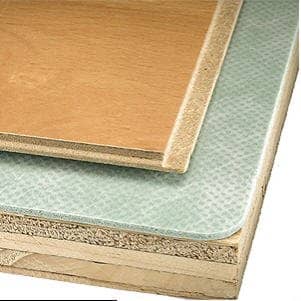How to Install Underlayment for Laminate Flooring on Concrete
I enjoy working on home improvement projects and know a lot about installing hardwood floors.
Most people who are looking to lay laminate floors are mostly concerned with the color of the floor itself. But you need to remember that flooring is important both on the laminate you install and the underlayment underneath the laminate itself. You want to create the best conditions for both what is visible and above the surface and what can't be seen. So before you actually get to installing the laminate floor, you will want to judge the flooring or sub floor beneath where you intend to lay. In this short article, I intend to give you some laminate flooring underlayment tips to help you lay the best floor possible.
Know What Is Under Your Floors
Your subfloor could be a concrete slab or it could be wood boards. If you are laying a floating hardwood floor, then you can pretty much ignore it as most floating floors can lay over ceramic, tile, or other flooring. You will also need to get a moisture measurement before you lay an underlayment because, although most laminate floors can handle more moisture than most floor, high moisture underneath can pretty much ruin an installation.

QuietMaxx is a popular laminate underlayment. An underlayment is important not only with buffering sounds but also with protecting your floors from moisture underneath the floors.
Underlayment Installation
You Will Need to Clean the Subfloor Before You Lay the Underlayment
Another issue that you will have to deal with before you install a new laminate floor is to make sure that the sub floor is swept clean of debris and is as level as possible. While installing laminate flooring doesn't require a complete level surface, the more level you can make it, the better off you will be as you are laying the floors.
If the subfloor is concrete, you may have to get a concrete sealer and seal off cracks on the surface. If you are removing a carpet, you may have to scrape off the carpet residue to level the surface.
If the subfloor is wood, then you may need to nail in boards and add plywood to even the surface before you lay the laminate underlayment.
Moisture Is a Floor Killer
If you live in an area that is humid such as the southern part of the United States or an area that has a lot of moisture, then you will need to seal off any parts of the subfloor, which may be able to leak moisture onto your floors. You can buy a damp proof compound for your concrete slab subfloor to fill in any gaps that may emanate moisture. You will want this compound to be completely dry before moving on to laying the underlayment.
Some Laminate Flooring Has an Underlayment Under Each Plank
Understand that you may not need to buy an underlayment. In a lot of modern laminate flooring, there is already an underlayment on each piece of laminate. Many laminate floors that you can buy at Home Depot or Lowe's comes with an underlayment already attached.
All this said, adding more underlayment will soften the otherwise hard feeling of laminate and help to reduce noise.
Types of Underlayment for Laminate
There are many different types of underlayment that you can choose. The most popular are foam, cork, and plywood. Many underlayment products are a mixture of all three. The primary purpose of an underlayment is to buffer sounds or the soft echo that comes with walking on the floors.
Read More From Dengarden
An underlayment is also there to protect the floors from moisture which could cause buckling or damage. The best laminate underlayments are good for moisture insulation.
Damp Proof Membrane (DPM)
If your sub floor is concrete or a slab, then you will definitely want to make sure that your underlayment is DPM or Damp Proof Membrane. This will further buffer your floors from moisture. If your subfloor is on planks, then you won't want DPM as wood needs to breathe to prevent mold from forming.
Always get your moisture levels before you start to lay an underlayment for your laminate floors.
This article is accurate and true to the best of the author's knowledge. Content is for informational or entertainment purposes only and does not substitute for personal counsel or professional advice in business, financial, legal, or technical matters.
Mr builder on March 30, 2018:
Guys , Ryan was right . If you look at 3:29, it shows that the wood is supposed to have that 'bubbling' effect. I've been installing laminate for a very very long time. Thanks
Ryan on March 01, 2018:
I'm not a pro or anything, but I've installed 3 laminate floating floors and I'm with you Bernie, it looks bubbled. Sorry if that offends you, Josh, just calling it like I see it, I guess I'm a "moron" too.
josh on August 17, 2011:
The boards arent "bubbling" moron...those are hand scraped planks. It creates a wavy texture to the wood. They are in high demand and look great.
Bernie on March 20, 2011:
The floor looks awful. Maybe the video highlights the defects but all of the boards look like they are bubbling - probably due to the moisture in the glue. If that was my floor, I would rip it up and replace it - and curse the installer that clued the cork and laminate.
How to Install Underlayment for Laminate Flooring on Concrete
Source: https://dengarden.com/home-improvement/Laminate-Floor-Underlayment-Tips
0 Response to "How to Install Underlayment for Laminate Flooring on Concrete"
Post a Comment